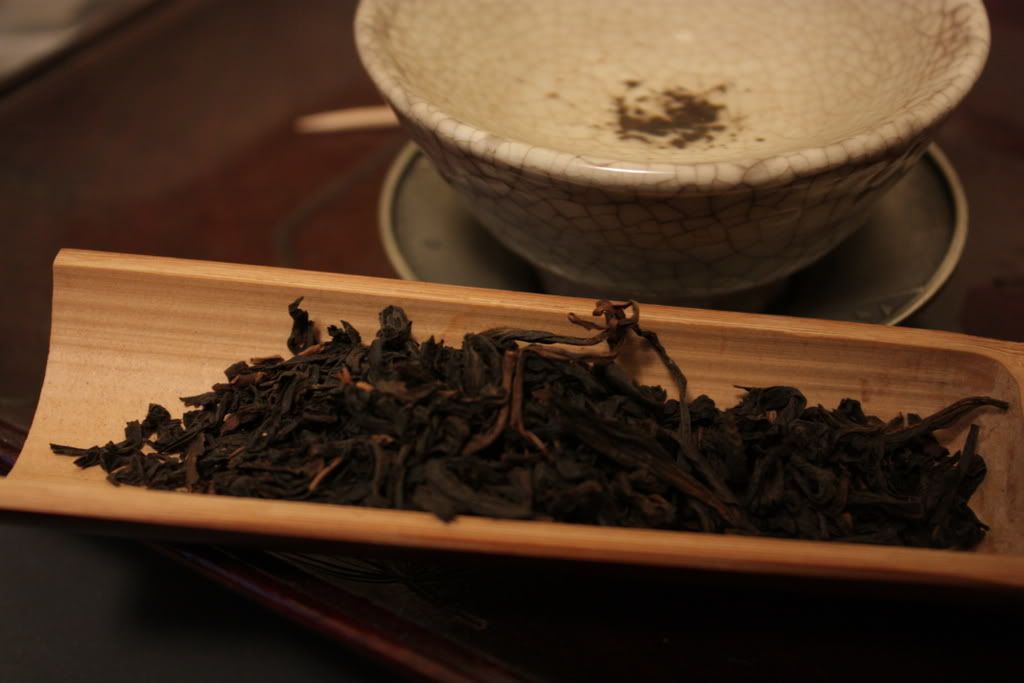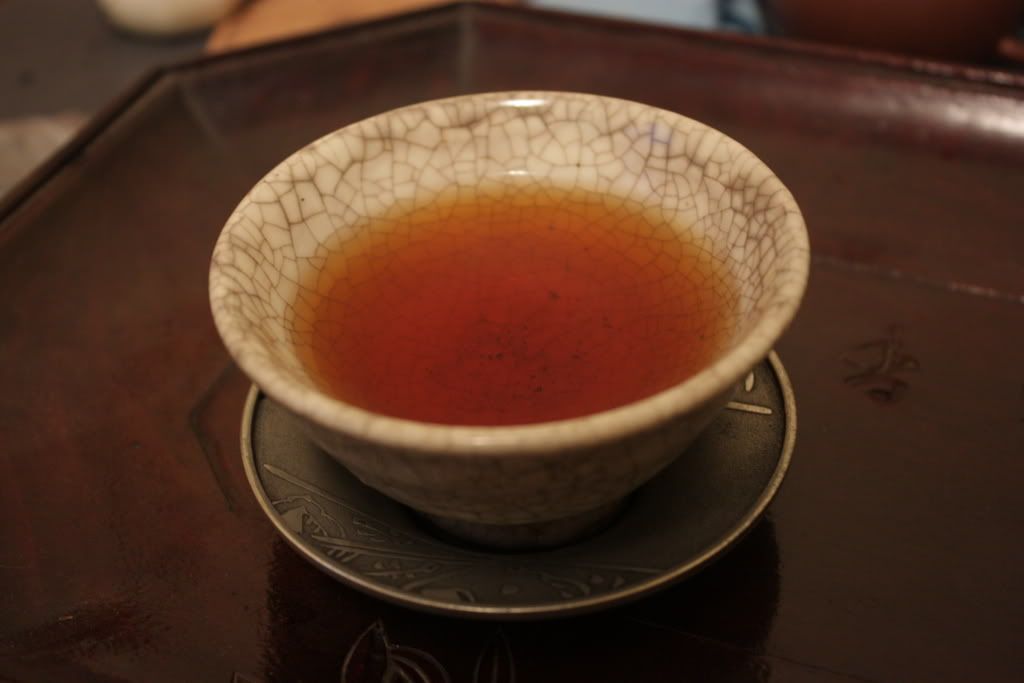When you age something, you want it to develop that aged taste. Something happens to organic compounds that eventually they change in character, somehow, and us humans can taste those differences.
How that change happens we seem to know very little. I wonder — is there a way for anybody to test what’s in the tea/wine/cigar? Compare it with something that hasn’t been changed? Or is that simply impossible to do? I do want to know, for example, what it is that causes puerh to taste different when it gets old, and preferably, to know exactly what changes took place that made it taste the way it does after 10 or 20 years in storage.

I had a sample a few days ago (the first real tea session I’ve had in…. 3 weeks?) of an aged shuixian. It is an interesting tea — a bit weak, like all shuixians are, but if you close your eyes and don’t know what it is, you’d think this is a dry stored puerh of about 5-10 years of age. It has that distinctive sourness and fruity character that mark a lot of dry stored puerhs that I’ve had. It also has little bitterness, much faded in the distant background. The most obviously “shuixian” bit was actually the smell of the dry leaves — I smelled the bag and knew this was an aged shuixian, but that’s because I sniffed a lot of these things when I was in Taiwan. In an unmarked bag with relatively broken leaves, it’s not an easy thing to tell.
Even the color is a bit deceptive, lighting or no lighting.

This is what got me thinking — what is it that causes this shuixian to taste more like a dry stored puerh than a typical aged shuixian? Lack of reroasting? I don’t think that’s it, because I’ve had others that don’t have that puerh-esque taste. What else goes into the aging of a tea that makes it so?
Maybe one day I’ll get funding for a lab and find out for good. Until then… back to my aged baozhongs.

3 responses so far ↓
mulcahyfeldman // October 29, 2008 at 12:36 pm |
The Tea Gallery has a 1997 Shui Xian Brick. Is it unusual to press an oolong into a brick and then would it taste like the dry-stored puerh? I hope you get that lab funded and can throw yourself headlong into researching tea so we can continue our education. Eileen
MANDARINstea // October 30, 2008 at 12:27 pm |
As you mentioned, we have to pool together a fund to lab-test these changes somedays….
But from my humble experience, I think something really happen by aging tea and cigar. IMO, I don’t really try to taste the high and low notes for an aged 30+ yrs old tea, instead, it has nothing to do with the taste anymore…. The liquor or the smoke (alike) make you feel something besides the sense of taste or aroma, but the awakening of all the sense instead and let me focus on my consciousness.
I think a lot of perishable substances will be gone by 10-15 yrs. which creates the higher notes in greener or younger tea. The left over by aging became the real tea or cigar “soul”, and we can then cut all the presentation and go into the truth spirit of it. Again, I do believe all tea are not created equal, and am still trying to understand and collect those little treasure, if you may. Thanks again for sharing your thoughts, I know I might be mumbling… but at least I have a chance to let it out : ) Cheers Tok
Anonymous // October 31, 2008 at 9:42 pm |
Good Question. Let me know when you find out. You ‘ll have to get that lab funded sooner rather than later to enlighten us all.